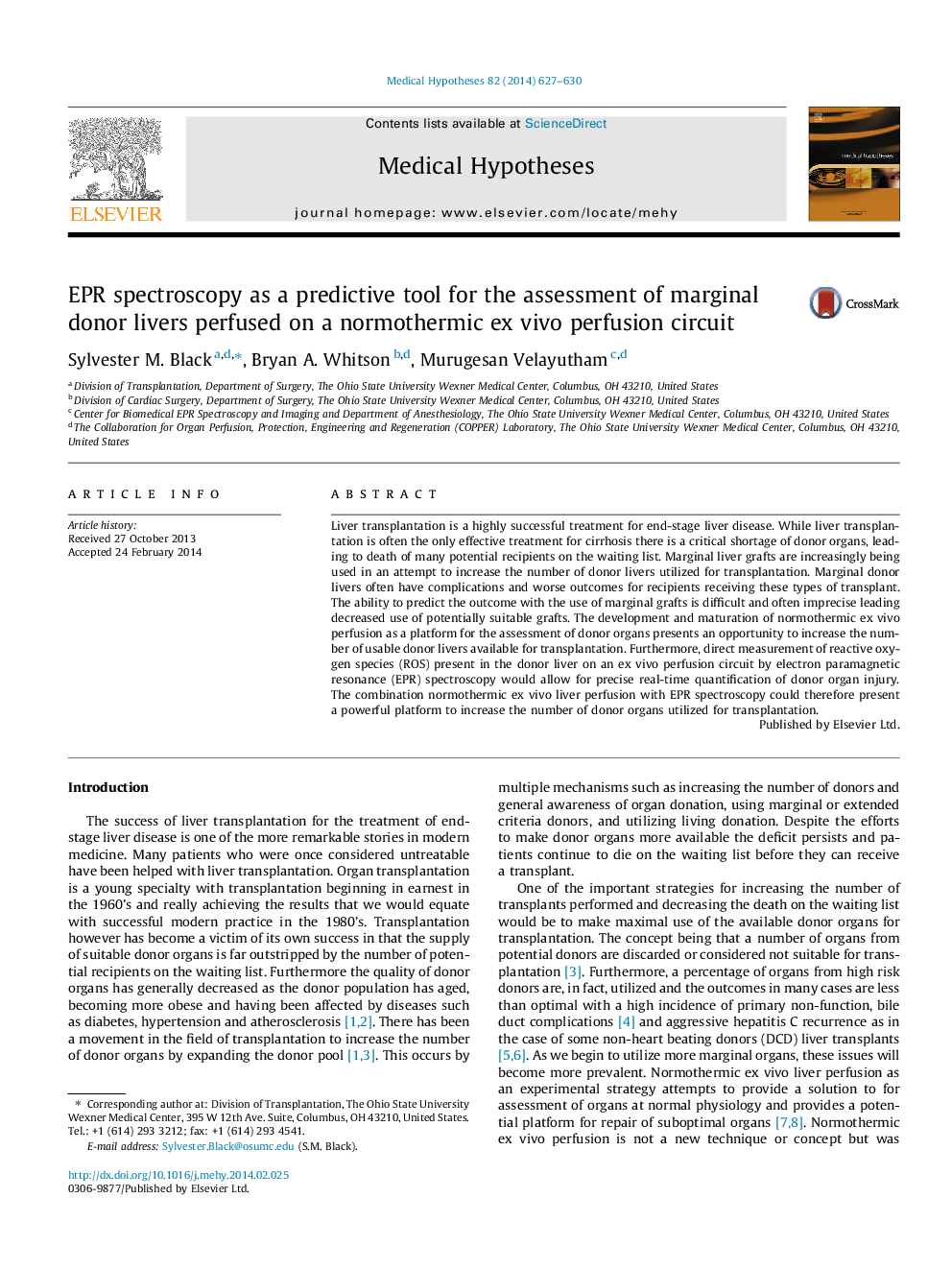| Article ID | Journal | Published Year | Pages | File Type |
|---|---|---|---|---|
| 5812012 | Medical Hypotheses | 2014 | 4 Pages |
Liver transplantation is a highly successful treatment for end-stage liver disease. While liver transplantation is often the only effective treatment for cirrhosis there is a critical shortage of donor organs, leading to death of many potential recipients on the waiting list. Marginal liver grafts are increasingly being used in an attempt to increase the number of donor livers utilized for transplantation. Marginal donor livers often have complications and worse outcomes for recipients receiving these types of transplant. The ability to predict the outcome with the use of marginal grafts is difficult and often imprecise leading decreased use of potentially suitable grafts. The development and maturation of normothermic ex vivo perfusion as a platform for the assessment of donor organs presents an opportunity to increase the number of usable donor livers available for transplantation. Furthermore, direct measurement of reactive oxygen species (ROS) present in the donor liver on an ex vivo perfusion circuit by electron paramagnetic resonance (EPR) spectroscopy would allow for precise real-time quantification of donor organ injury. The combination normothermic ex vivo liver perfusion with EPR spectroscopy could therefore present a powerful platform to increase the number of donor organs utilized for transplantation.
